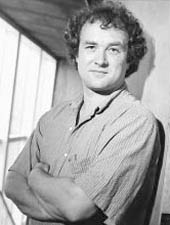Brady-Kalnay, S. M., Mourton, T., Nixon, J. P., Pietz, G. E., Kinch, M., Chen, H. Y., Brackenbury, R., Rimm, D. L., Del Vecchio, R. L., Tonks, N. K. (April 1998) Dynamic interaction of PTP mu with multiple cadherins in vivo. Journal of Cell Biology, 141 (1). pp. 287-296. ISSN 0021-9525
Preview |
PDF (Paper)
Tonks Journal of Cell Biology 1998.pdf - Published Version Download (896kB) | Preview |
Abstract
There is a growing body of evidence to implicate reversible tyrosine phosphorylation as an important mechanism in the control of the adhesive function of cadherins. We previously demonstrated that the receptor protein tyrosine phosphatase PTP mu associates with the cadherin-catenin complex in various tissues and cells and, therefore, may be a component of such a regulatory mechanism (Brady-Kalnay, S.M., D.L. Rimm, and N.K. Tonks. 1995. J. Cell Biol. 130:977-986). In this study, we present further characterization of this interaction using a variety of systems. We observed that PTP mu interacted with N-cadherin, E-cadherin, and cadherin-4 (also called R-cadherin) in extracts of rat lung. We observed a direct interaction between PTP mu, and E-cadherin after coexpression in Sf9 cells. In WC5 cells, which express a temperature-sensitive mutant form of v-Src, the complex between PTP mu and E-cadherin was dynamic, and conditions that resulted in tyrosine phosphorylation of E-cadherin were associated with dissociation of PTP mu from the complex. Furthermore, we have demonstrated that the COOH-terminal 38 residues of the cytoplasmic segment of E-cadherin was required for association with PTP mu in WC5 cells. Zondag et al. (Zondag, G., W. Moolenaar, and M. Gebbink. 1996. J. Cell Biol. 134: 1513-1517) have asserted that the association we observed between PTP mu and the cadherin-catenin complex in immunoprecipitates of the phosphatase arises from nonspecific cross-reactivity between BK2, our antibody to PTP mu, and cadherins. In this study we have confirmed our initial observation and demonstrated the presence of cadherin in immunoprecipitates of PTP mu. obtained with three antibodies that recognize distinct epitopes in the phosphatase. In addition, we have demonstrated directly that the anti-PTP mu antibody BK2 that we used initially did not cross-react with cadherin. Our data reinforce the observation of an interaction between PTP mu, and E-cadherin in vitro and in vivo, further emphasizing the potential importance of reversible tyrosine phosphorylation in regulating cadherin function.
Actions (login required)
 |
Administrator's edit/view item |



